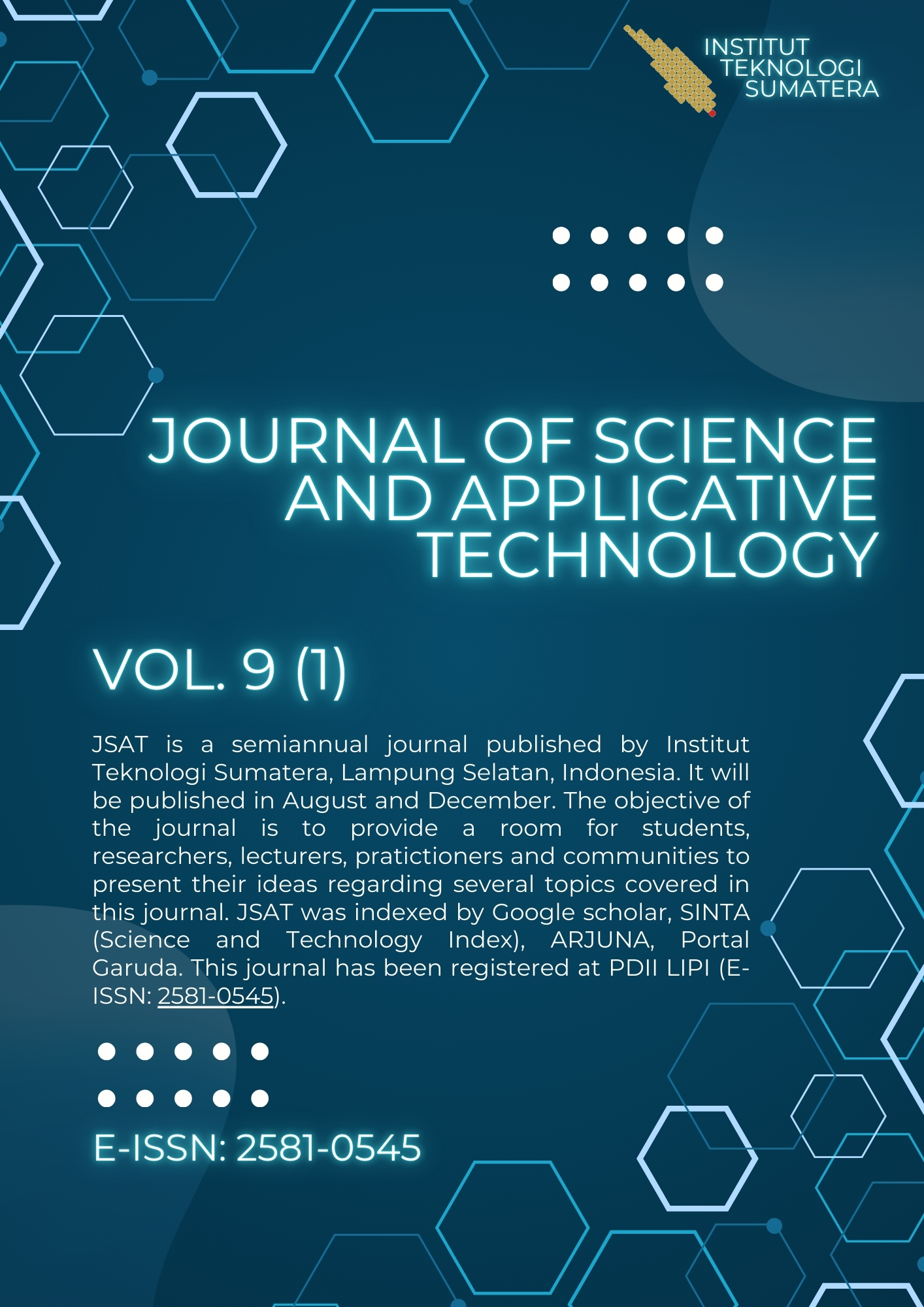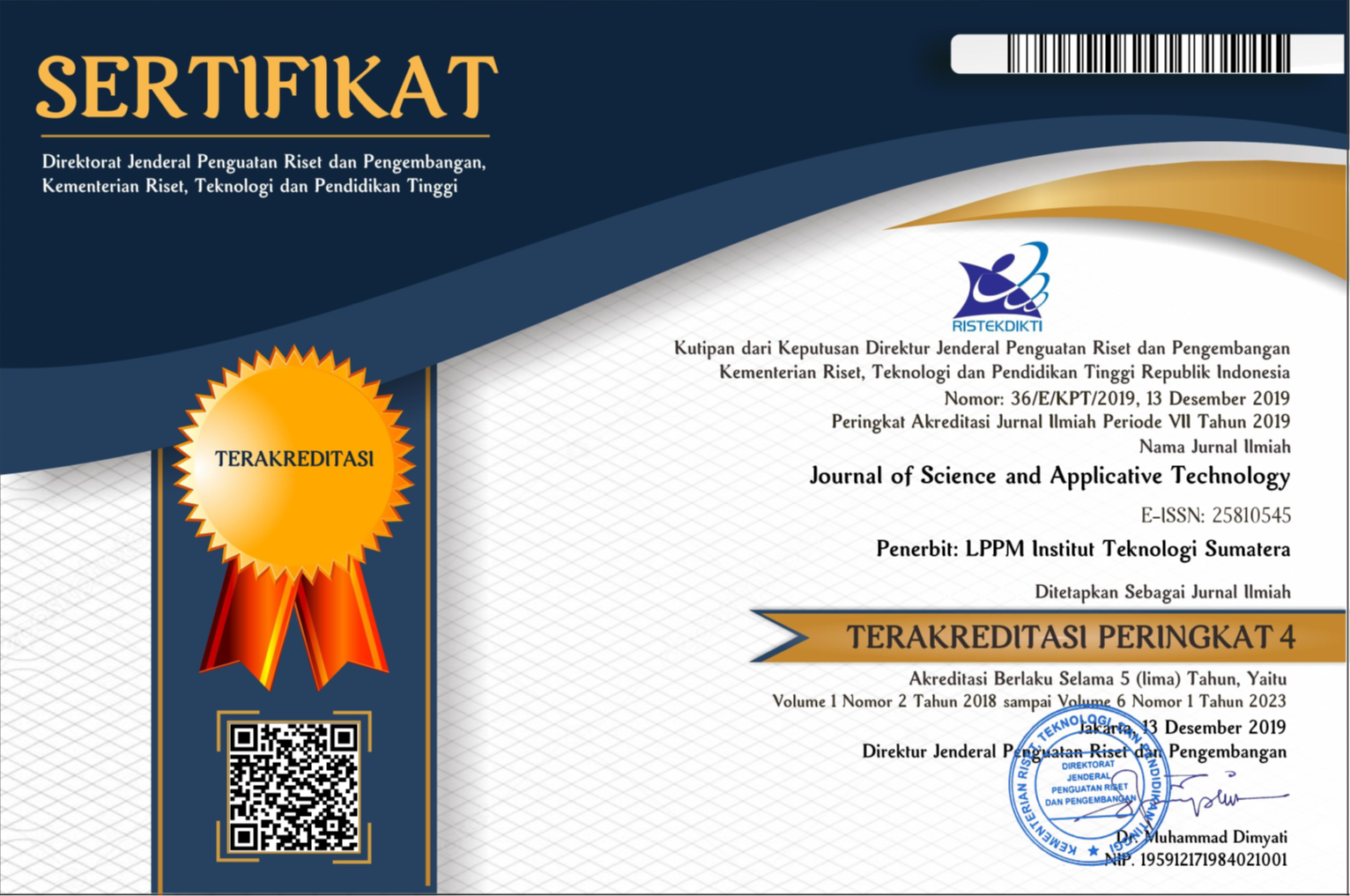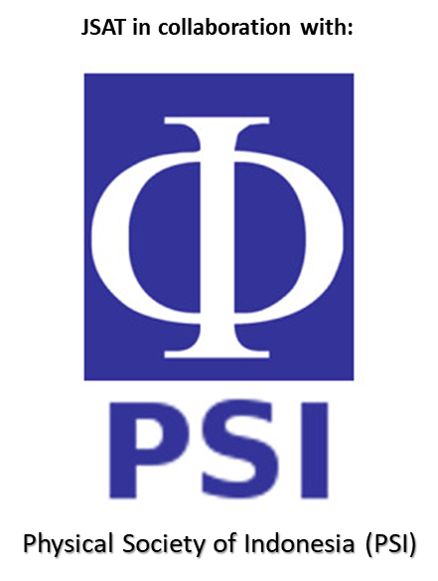Quantitative Profiling of Total Flavonoid Content in Cassava Leaf (Manihot esculenta Crantz) Varieties and Isolation of Flavonoid Compounds from a High-Flavonoid Variety
Abstract
Cassava (Manihot esculenta Crantz) is widely utilized across Indonesia as both a staple food and a traditional medicinal resource, and its leaves are known to contain bioactive secondary metabolites such as flavonoids. This study aimed to quantify the total flavonoid content in several cassava leaf varieties and to isolate a flavonoid compound from the variety with the highest flavonoid content. Total flavonoid content was determined using UV-Visible spectrophotometry. The isolation of flavonoid compounds was carried out using vacuum liquid chromatography (VLC) and column chromatography (CC), with thin-layer chromatography (TLC) employed to monitor the separation results. The total flavonoid content of the Gajah, UJ-3 (Thailand), UJ-5 (Katsesart), Cimanggu dan Kaspro varieties were found to be 1.029 ± 0.003 mgQE/g, 0.746 ± 0.006 mgQE/g, 0.970 ± 0.009 mgQE/g, 0.936 ± 0.004 mgQE/g and 1.220 ± 0.003 mgQE/g, respectively. The Kaspro variety exhibited the highest flavonoid content. Isolation and characterization of the flavonoid from Kaspro leaves yielded a yellowish powder with absorption maxima at 269 nm (Band II) and 334 nm (Band I). Further analysis using shift reagents identified the isolated compound as apigenin, a member of the flavone group.
Downloads
Copyright (c) 2025 Journal of Science and Applicative Technology

This work is licensed under a Creative Commons Attribution-NonCommercial 4.0 International License.
All the content on Journal of Science and Applicative Technology (JSAT) may be used under the terms of the Creative Commons Attribution-NonCommercial 4.0 International License.
You are free to:
- Share - copy and redistribute the material in any medium or format
- Adapt - remix, transform, and build upon the material
Under the following terms:
- Attribution - You must give appropriate credit, provide a link to the license, and indicate if changes were made. You may do so in any reasonable manner, but not in any way that suggests the licensor endorses you or your use.
- NonCommercial - You may not use the material for commercial purposes.
- No additional restrictions - You may not apply legal terms or technological measures that legally restrict others from doing anything the license permits.





















